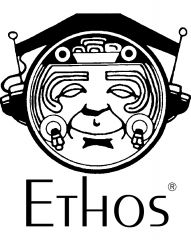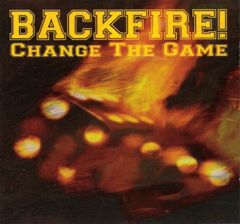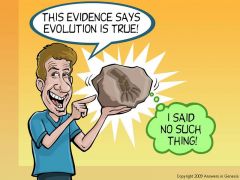![]()
![]()
![]()
Use LEFT and RIGHT arrow keys to navigate between flashcards;
Use UP and DOWN arrow keys to flip the card;
H to show hint;
A reads text to speech;
80 Cards in this Set
- Front
- Back

What are the most useful tools in a day-to-day argument?
|

• Set your goals and the arguments tense
• Think if you want to emphasize character, logic or emotion • Make sure the time and medium are ripe for persuasion |
|

What is Cicero’s outline for a speech or presentation?
|

• Introduction
• Narration • Division • Proof • Refutation • Conclusion |
|

What is "Personal Goal"?
|

What you want from the audience
|
|

What are the 3 audience goals that Cicero suggests
|

Change the Mood
Change the Mind Change the Willingness to Act |
|

What is "issue control"?
|

Mastering argument's chief topics of blame, values and choice.
|
|

Aristotle called this kind of argument forensic. Its chief topics are guilt and innocence.
|

Blame
|
|

This is demonstrative or tribal rhetoric. Chief topics are praise and blame.
|

Values
|
|

This is a deliberative argument, the rhetoric of politics. Its cheif topic is the advantageous.
|

Choice
|
|

The issues of blame, values and choice deal with different "tenses". What are the tenses for these issues.
|

Blame - past
Values - present Choice - future |
|

This is argument by character - using your reputation or someone else's as the basis for argument. Its 3 aspects are virtue, practical wisdom, and disinterest.
|

Ethos
|
|

A good way to show your character is by showing what trait?
|

Decorum ( your ability to fit in with the audiences expectations of a trustworthy leader )
|
|

Irony
|
Saying one thing to outsiders with a meaning revealed only to your group.
|
|

The appearance of living up to your audiences values
|

Virtue
|
|

What are some of the ways you can show your virtue? (6)
|

Bragging
Character Referance/Witness Bragging Tactical Flaw Switching Sides/Oposition Switch Eddie Haskell Ploy Logic-Free Values |
|
|
The straightforward, and least effective, way to enhance your virtue.
|

Bragging
|
|
|
An endorsement by a third party, the more disinterested the better.
|

Witness Bragging/Character Reference
|
|

A defect or mistake, intentionally revealed, that shows your rhetorical virtue
|

Tactical Flaw
|
|
|
Appearing to have supported the powers that be all along
|

Switching Sides/Oposition Switch
|
|
|
Throwing your support behind the inevitable to show off your virtue.
|

The Eddie Haskell Ploy
|
|
|
Focusing on the individual values-words and commonplaces to bring a group together and get it to identify with you.
|

Logic-Free Values
|
|

What are 3 ways you can show Practical Wisdom?
|
Showing off your experience
Bending the rules Appearing to take the middle course |
|

An apparent willingness to sacrifice your own interests for the greater good.
|

Disinterest/Selflessness
|
|

Appearing to have reached your conclusion only because of its overwhelming rightness.
|

Reluctant Conclusion
|
|

Claiming that the choice will help your audience more than it will help you
|

Personal Sacrifice
|
|

Seeming doubtful about your own rhetorical skill
|

Dubitatio
|
|

What are the 8 techniques for judging a persons credibility?
|

Needs Test- Does the persuaders needs match mine?
Compatable Experience- Has the persuader actually done what he is talking about? Dodged Questions- Ask who benefits from the choice. If you dont get a straight answer, dont trust that persons disinterest. "That Depends" Filter- instead of a one-size-fits-all choice, the persuader offers a solution tailored to you. "Sussing" Ability- The persuader cuts to the chase. Extremes- How does the persuader describe the opposing argument? Virtue Yardstick- does the persuader find the sweet spot between the extremes of your values? Code Inoculations- Be aware of the terms that define the groups you belong to, and watch out when a persuader uses them. |
|

An argument by emotion is the seductive part of persuasion. It can change a mood, make an audience more receptive to your logic and give them an emotional commitment to your goal.
|

Pathos
|
|

Registering concern for your audiences emotions.
|

Sympathy
|
|

Aristotle said this is the key to emotion.
|

Belief
|
|

Underplaying an emotion, or gradually increasing it so that the audience can feel it along with you.
|

Volume Control
|
|

Avoid tipping off your audience in advance of a mood, they will resist it.
|

Unannounced Emotion
|
|

If you want to direct an audience's anger away from someone, imply the action happened on its own.
|

Passive Voice
|
|

You can calm an individual's emotion in advance by overplaying it yourself. This works well when you screw up and want to prevent the wrath of an authority.
|

Backfire
|
|

What are 4 persuasive emotions?
|

1. Anger
2. Patriotism 3. Emulation 4. Humor |
|

Name 6 figures of speech.
|

1. Cliche Twisting: using overworked language to your advantage.
2. Word Swap: changing normal usage and grammar for effect. 3. Weighing Both Sides: comparing or contrasting opinions in order to define the issue. 4. Editing out load: interrupting yourself or your opponent to correct something 5. Volume Control: amplifying or calming speech through figures 6. Word Invention: figures help you create new words or meanings from old words |
|

An argument by logic is called...
|

Logos
|
|

Applying a general principle to a particular matter
|

Deduction
|
|

A logic sandwich that contains deduction
|
Enthymeme
|
|

Any cliche, belife, or value that can serve as your audiences boilded down public opinion. It's the starting point of your argument.
|

Commonplace
|
|

Argument by example. It starts with the specific and moves to the general
|

Induction
|
|

Using your opponent's own argument to your advatage
|

Concession
|
|
|
Shaping the bounds of an argument
|
Framing
|
|

The 3 steps in framing strategy
|
1. Find the audiences commonplace
2. Define the issue broadly, appealing to the values of the widest audience 3. Deal with the specific problem of choice, using the future tense |
|

Name the 4 logical fallacies
|
1. Bad Proof
2. Bad Conclusion 3. Disconnect between Proof and Conclusion 4. Rhetorical Fouls |
|
|
The arguments commonplace or principle is unacceptable, or the examples are bad
|
Bad Proof
|
|
|
Two things are similar, so they must be the same.
|
False Comparison
|
|
|
Natural ingredients are good for you, so everything called "natural" is healthful.
|
All Natural fallacy/Fallacy of Association
|
|
|
Other kids get to do it, so why don't I?
|
Appeal to popularity
|
|
|
Uses too few examples and interprets them too broadly.
|
Hasty Generalization
|
|
|
Takes the exception and claims it proves the rule.
|
Misinterpreting the Evidence
|
|
|
Does wierd math with apples and oranges, often confusing the part for the whole.
|
Unit Fallacy
|
|
|
Claims that if something has not been proven, it must be false.
|
Fallacy of Ignorance
|
|
|
We're given too many choices, or not enough, or the conclusion is irrelevant to the argument.
|
Bad Conclusion
|
|
|
Squashes two or more issues into a single one
|
Many questions
|
|
|
offers the audience two choices when more actually exist
|
False Dilemma
|
|
|
Assumes that this moment is identical to past, similar moments.
|
Fallacy of Antecedent
|
|
|
Introduces an irrelevant issue to distract or confuse the audience.
|
Red Herring
|
|
|
Sets up a different issue thats easier to argue
|
Straw Man
|
|
|
The proof stands up ok, but it fails to lead to the conclusion
|
Disconnect between Proof and Conclusion
|
|
|
A logical redundancy; the proof and the conclusion are the same thing
|
Tautology
|
|
|
Takes the opponents choice and reduces it to an absurdity
|
Reductio ad absurdum
|
|
|
Predicts a series of dire events stemming from one choice
|
Slippery Slope
|
|
|
Assumes that if one thing follows another, the first thing caused the second one.
|
Post hoc ergo propter hoc/Chanticleer Fallacy
|
|
|
Mistakes or intentional offenses that stop an argument dead or make it fail to reach a consensus
|
Rhetorical Fouls
|
|
|
Its fine to use the past or present, but deliberative argument depends on eventually discussing the future
|
Switching Tenses away from the Future
|
|
|
Using the voice of God, sticking to your guns, refusing to hear the other side
|
Inflexible Insistence on the Rules
|
|
|
An argument that sets out only to debase someone, not to make a choice.
|
Humiliation
|
|
|
A form of irony used to debase someone. It often plants an idea in the audiences head by denying it.
|
Innuendo
|
|
|
Argument by the stick, it denies the audeince a choice
|
Threatening
|
|
|
When the audience is ripest for your argument
|
Persuadable Moment
|
|
|
Uncertain moods and beliefs-when minds are already beginning to change-signal a persuadable moment
|
Moment Spotter
|
|
|
Receptive, attentive and well disposed toward you
|
Perfect Audeince
|
|
|
If the current audience isnt ready for persuation, seek another one.
|
Audience Change
|
|
|
The 5 senses are key to the proper medium.
|
1. Sight is mostly pathos and ethos
2. Sound is the most logical 3. Smell, taste and touch are almost purely emotional |
|
|
The crafting part of a speech.
|
Invention
|
|
|
The 5 organizational parts of a speech
|
1. introduction
2. Narration 3. Proof 4. Refutation 5. Conclusion |
|
|
Choice of words that make a speech attractive to the listener.
|
Style
|
|
|
The 5 virtues of style
|
1. Proper Language
2. Clarity 3. Vividness 4. Decorum 5. Ornament |
|
|
The ability to speak without notes
|
Memory
|
|
|
The action of giving a speech
|
Delivery
|

